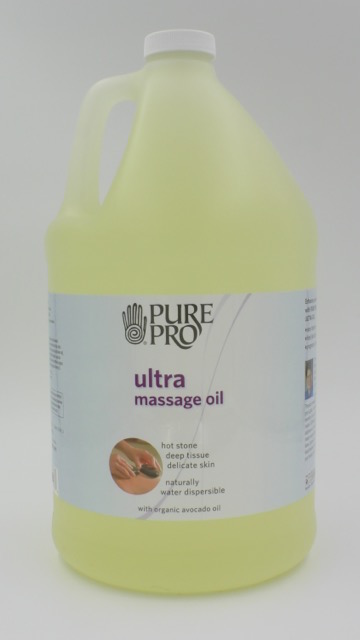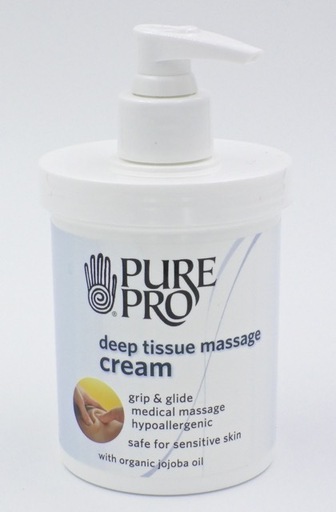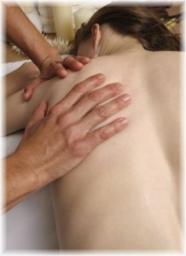
What is Oncology Massage? According to our partner and invaluable resource The Society for Cancer Massage (S4OM), it is the modification of existing massage therapy techniques in order to safely work with complications of cancer and cancer treatment.
There is much need to objectively and intelligently address the sensitive issue of touch and cancer. S4OM is a non-profit organization that provides support, education, resources, and a community forum to advance the knowledge and understanding of oncology massage. It serves massage and health care professionals as well as the public.
Thanks to S4OM you will find many supportive resources if you are a person with cancer or a caregiver, relative or friend. There is a wealth of information for massage therapists to enhance your practice. Look here for an ever-growing list of hospitals providing oncology massage services in the U.S. Learn how to assess the qualifications of your massage therapist before beginning treatment or get help finding a qualified therapist.
S4OM and Pure Pro are forming a partnership in 2015 to further assist the work S4OM does to elevate the standards of oncology massage. Stay tuned.
Pure Pro + Oncology Massage
 Hypoallergenic Massage Lotion™, Gallon (128 oz) Pump sold separately
Hypoallergenic Massage Lotion™, Gallon (128 oz) Pump sold separately
- Deeply nourishes and helps repair dry skin
- Soothes sensitive skin
- Leaves the skin soft and silky, not greasy
- Completely unscented, nut free and ultra gentle
 Arnica Therapy Massage Oil™, 4 oz Bottle
Arnica Therapy Massage Oil™, 4 oz Bottle
- Relieves muscular pain and soreness
- Dissipates bruises quickly
- Soothes mild burns (on intact skin only)
- Arnica Is Vital to Pain Relief!
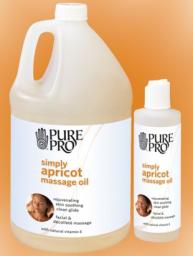 Simply Apricot Massage Oil ™, Gallon (128 oz)
Simply Apricot Massage Oil ™, Gallon (128 oz)
- Super nourishes dry, delicate or compromised skin
- Completely unscented and nut free
- Simple, gentle, delicate - back to basics
- Light, silky texture feels soft under your hands
Cancer, Massage and Lymphedema by William A. Collinge
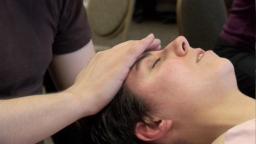 The Touch, Caring and Cancer Program seeks to address the sensitive issue of touch and cancer for patients and caregivers. Sponsored by the National Cancer Institute, it was developed to help family and friends learn safe and effective ways to provide comfort to cancer patients with the simple use of touch. One of the most important reasons for the project was that many caregivers are reluctant to touch people with cancer for fear of causing harm. As a result, patients often suffer from lack of touch when they could benefit the most. Concern over the presence of lymphedema is one of the reasons often cited for avoiding massage in cancer – even among some massage therapists and medical providers. Yet with proper understanding, lymphedema need not be a reason to withhold the comfort of touch.
The Touch, Caring and Cancer Program seeks to address the sensitive issue of touch and cancer for patients and caregivers. Sponsored by the National Cancer Institute, it was developed to help family and friends learn safe and effective ways to provide comfort to cancer patients with the simple use of touch. One of the most important reasons for the project was that many caregivers are reluctant to touch people with cancer for fear of causing harm. As a result, patients often suffer from lack of touch when they could benefit the most. Concern over the presence of lymphedema is one of the reasons often cited for avoiding massage in cancer – even among some massage therapists and medical providers. Yet with proper understanding, lymphedema need not be a reason to withhold the comfort of touch.
While breast cancer may be the first cancer most people think of regarding lymphedema, removal of lymph nodes from other areas besides under the arm also calls for precautions. For example, many people have nodes removed in the neck related to head, neck or throat cancers. In this case the use of manual techniques on that side of the head or face should be used with caution.
The following is an excerpt from the chapter on Safety Precautions in the manual that accompanies the new DVD program for home instruction, Touch, Caring and Cancer: Simple Instruction for Family and Friends
People at risk of lymphedema are sometimes advised to avoid putting stress on an area with lifting, blood pressure readings, sauna or hot tub, tight clothing, overuse of muscles, or other restrictions. If this applies to you, then massage with pressure should also be avoided in that area. Talk with your doctor about your risk of lymphedema and what precautions apply. It is likely that a little massage with soft, gentle hands, with just the pressure of applying lotion, is acceptable.
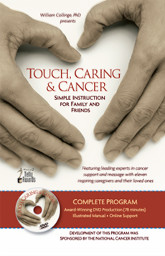 Instructional DVD: Touch, Caring and Cancer, Simple Instruction for Family and Friends
Instructional DVD: Touch, Caring and Cancer, Simple Instruction for Family and Friends
Many people are concerned about the use of touch in cancer possibly causing complications. When caregivers are concerned about this, patients may receive little or no touch when they could benefit from it the most. The reality is that there is no evidence of touch or massage spreading cancer or making it worse. There is a safe way to provide comfort through touch for anyone, no matter what their medical condition.
You have in your heart and hands the ability to reduce suffering in a loved one with cancer. Give them the gift of touch, and both of you will be rewarded.
To see video trailers of the Touch, Caring and Cancer: Simple Instruction for Family and Friends DVD program, visit Partners in Healing. The program and trailers are available in English, Spanish, and Chinese language versions.
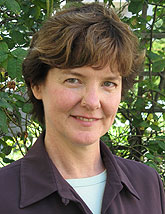
Over the years we have partnered with colleague Tracy Walton, also a collaborator with The Touch, Caring and Cancer Program. Tracy's pioneering work in oncology massage has inspired and guided bodyworkers, medical professionals, caregivers and patients alike.
- For a wealth of resources, visit www.tracywalton.com.
Here are links to some additional helpful resources:
- Society for Oncology Massage (S4OM) provides both therapist and patient resources including educational information and a therapist locator.
- National Lymphedema Network for information on prevention and management of primary and secondary lymphedema
- Memorial Sloan-Kettering Cancer Center for patient and survivor resources including cancer information, an extensive library of current research, and professional training
- Article: Learning and Unlearning on forging a new understanding of massage and cancer

